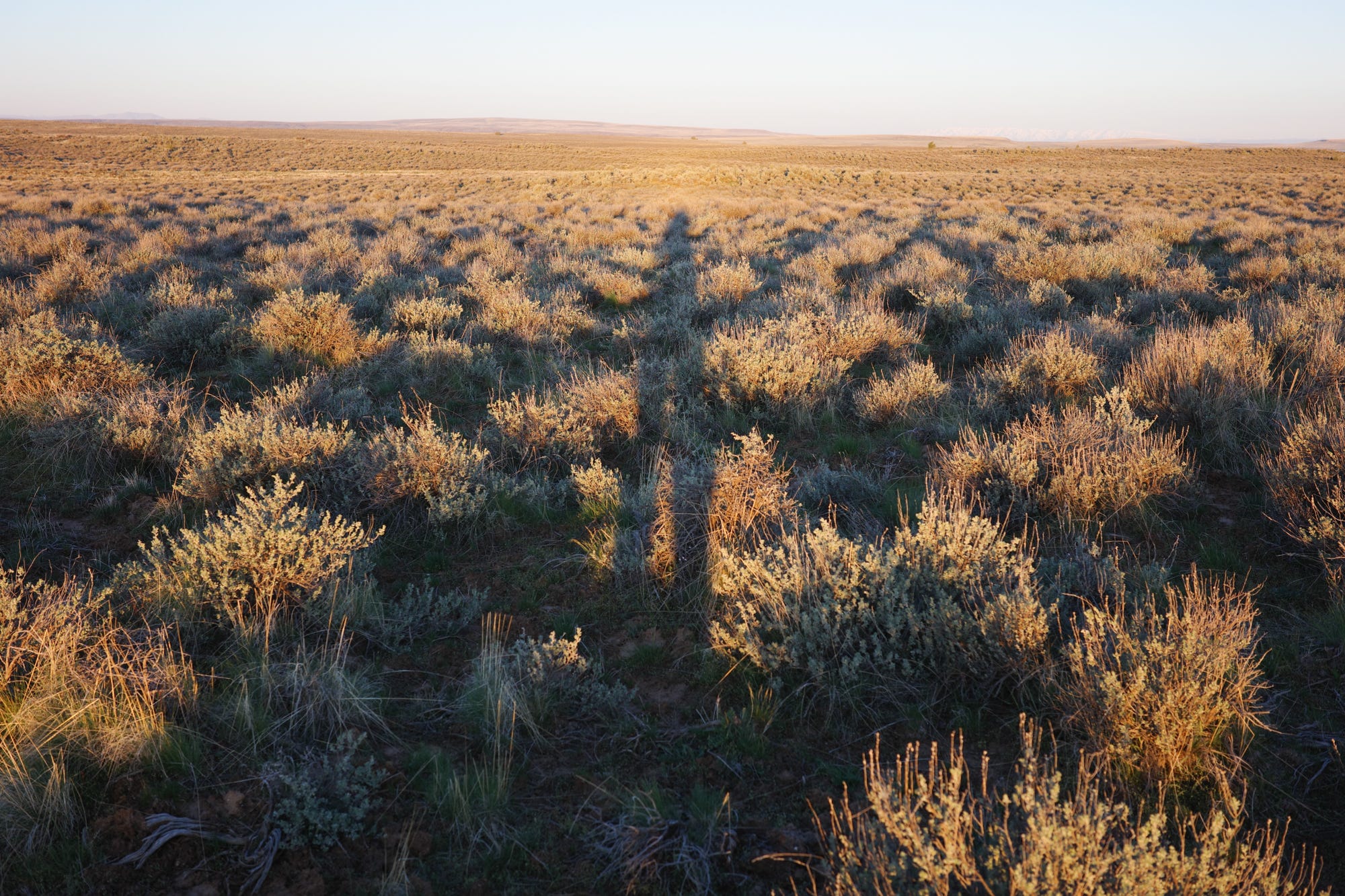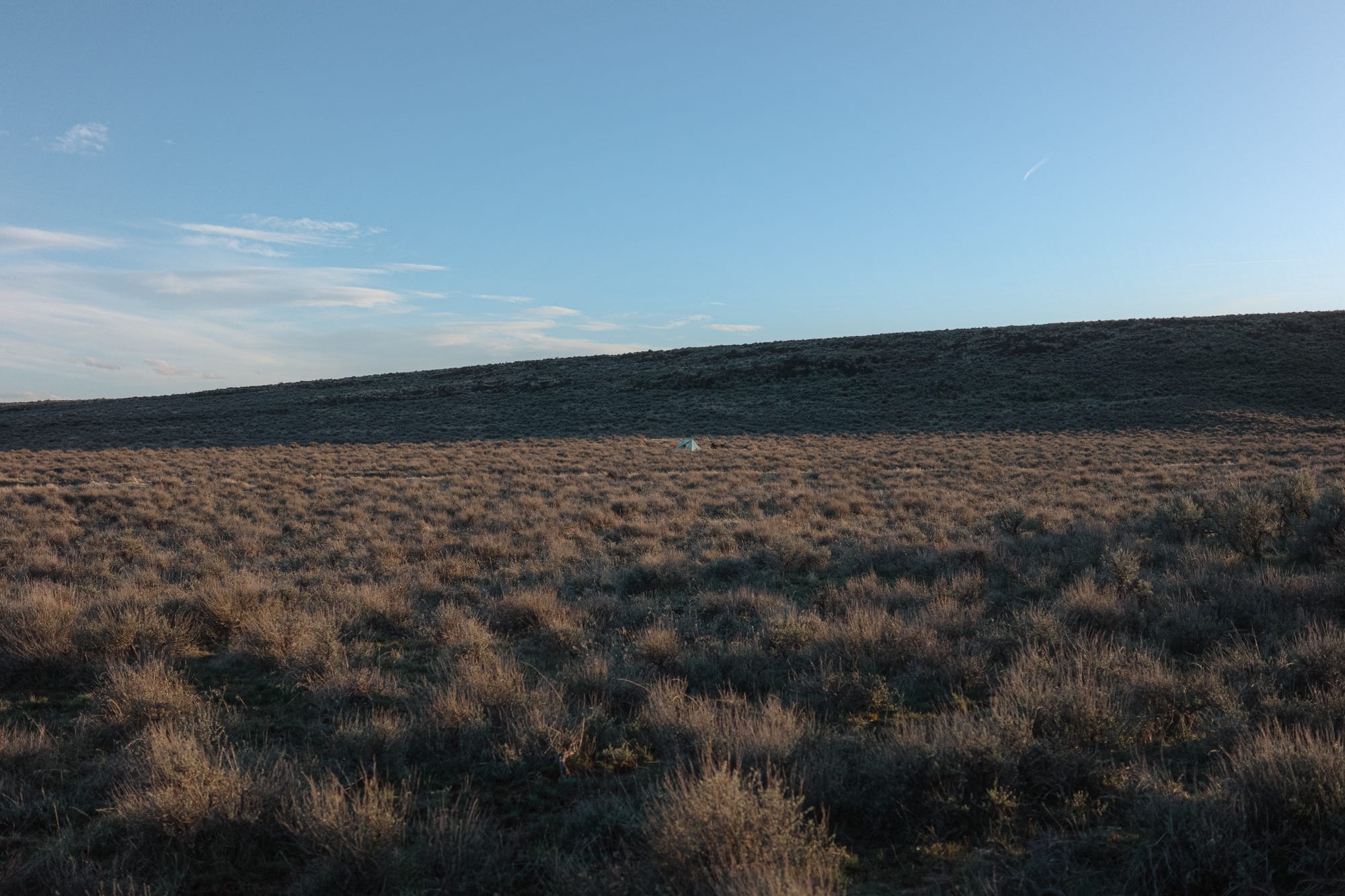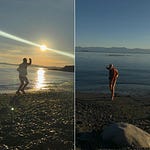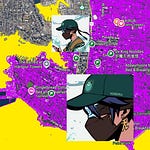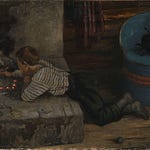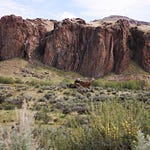There’s finality to certain things in life. One kind has to do with naming something. Another has to do with speaking its name.
These days, many people live in a world that is the opposite of wilderness—and yet feel a pull toward quiet places. Thus, describing somewhere as “vast, untouched, and silent,” make it become anything but that. There are many challenges that face free and open space, because land and resources have value—and not just monetarily.
The sentiment of “blank spaces on the map,” places free from human intervention, is no longer true. It may never have been. Along with many moments of disconnection that have occurred over the centuries, the idea that landscapes exist separate from our lives is false.
What we now consider wild places used to be called “home,” and to many, these spaces still are a kind of home. In the last decade of my own life, traveling, working and living in wild, open country has taught me more about myself than anything else, and held me in ways nothing else could. Wild spaces ask nothing in return except to respect and support our interdependency.
Wild places have been part of humanity for our entire history, and remain so today in elegant ways. Sitting on a canyon rim looking out, it might be hard to connect such a place and a cityscape. But in the arid west, most large rivers end up passing through reservoirs, used for drinking water and irrigation. Less direct connections exist to our history, cultural legacy. These are the places many come to regain a sense of humanity. They are the vestiges of wildness, which still provide the basics of what we need: water, clean air, and food.
We all live downstream.
The Owhyees are the largest unprotected wild area in the lower 48. Because they offer solitude and silence that are becoming ever more rare, I hesitate to say their name.
And yet, people have been living in the Owhyees for 14,000 years. Every canyon, mountain top, and sage brush basin has seen hunting, gathering, fires, stories, births, deaths and culture. The Shoshone-Bannock people and the Numu (Northern Paiute) are still here—and many peoples from time immemorial have called the Owhyee country home.
Today, there is a problem with sharing less known places: they go viral. Etiquette, it turns out, isn’t rewarding in the short term. And yet, I’m optimistic about the trajectory of land use, and part of my optimism has to do with the preservation of and access to public land, and places like the Owhyees. These places bring us modern, complex people back to ourselves in simple, humbling ways.
“The canyon bottoms always change, but the canyon walls stay the same,” were the parting words Tim Davis left me with after we drove a loop south of where he grew up in Eastern Oregon. As executive director of Friends of the Owhyee (FOTO), a nonprofit based in Ontario, Idaho, he’s dedicated to education and awareness around the massive, 7 million acre area that is the Owhyee watershed. He grew up fishing and wandering the area, and considers it his backyard.
Tim made it clear to me, that he has no problem with people visiting the Owhyee. What's less clear is how the BLM, already understaffed, is going to handle unmanaged recreation, fire seasons, and infrastructure that is already on the brink. Simple things like toilets, waysides, and signs—not to mention range quality management, wildlife surveys, and rules enforcement.
The Owhyee Country is a unique place. From the highway, like many special spots, it doesn't look like much. And yet due to social media parts of it are now blowing up.
What people are in pursuit of these days is becoming harder to find. Dark skies. Vast vistas. Few people. Silence. In the the Owhyees, part of which touches the Northern Great Basin, I experienced a type of silence the like of which I've known few other places.
Somedays, the wind stills. Maybe it’s late in the fall, and warm by midday, maybe after the birds have headed south—when the first frost has killed the insects. When the skies are bright blue and clear. Sometimes, on days like that, a complete, ear-ringing silence descends on the landscape, in a way like nowhere else.
Imagine standing on a hilltop, and as far as you can see in any direction is nothing but sun and sagebrush—and at the same time, it’s dead silent.
The simplicity of this kind of experience, the feel of the wind and the sun, the scents of sage, juniper and dust, are remedies for the complicated, overstimulating, and busy lives we all live. It’s an experience that is almost absent in the modern world today.
How do we allow access to a place like this, while keeping its essential character, and characters? Allowing the stakeholders to have their needs met, while also opening the door for increasing visitation?
I have been thinking about this for conundrum for years, and you're gonna have to find someone a lot wiser than me to know what to do about it. Tim, and his staff and board members at FOTO are some of those people. One solution, they think, is to create a million acre wilderness in the Owhyee Canyon. They want this done with respect to the traditional use of the Paiute, Shoshone, and other tribes who've been there for 14,000 years, and also the ranchers who have been grazing cows for the last few hundred. The good news is, the bill to create the wilderness has passed the Senate. To become a law, the bill must now pass the House.
For decades, the Owhyees have been known as a unique place in terms of ecology and cultural significance, with conservation efforts going back to 1928. This land use ethic is a double edged sword, with locals opposing the idea of other people telling them how to live on the land they have worked for generations. However, Tim is hopeful agreements canbe reached where everyone has their needs met—with the particular desires of preservation and use. I'm personally in favor of the roads and facilities being maintained as they are, unpaved, so that the Owhyee can retain its special character of hard-edged remoteness, that not anyone wants to, or can access. I think, in other words, that limitations remain important.
There is a part of ourselves revealed only by going certain places. There’s a relationship with vast, empty space, and the Jungian or esoteric idea of the unconscious. Places like the Owhyees, the ocean, and the deep backcountry are some of the last vestiges where a person can come to feel more like themselves. And maybe even more than themselves.
In my wanderings in the Owhyees, I saw hundreds of chukar, willets, sand hill cranes standing in ponds reflecting the sky, scaups, swifts passing with a whoosh abovehead, peregrine falcons playing on the breeze in between massive canyon walls, sage grouse nearing the hundreds, coyote, pronghorn, badger, ranchers in diesel rigs dragging cattle trailers, redband trout over 24”, kildeer, sunsets, violet green swallows. I saw reflected in the landscape a complexity that has been in process for millions of years, and in that I saw reflected myself. My idiosyncrasies, my darkness and light, ease and struggle, and my own developmental trajectory, my own blind spots and mysteries.
It’s space and silence that give me a place to expand into a vast sense of self—one that leaves smallness behind and gives room to breathe. Vast spaces give room to be without priority, trajectory or reason. I feel that connecting with them is connecting with the most generous, and at the same time indifferent, force or process that exists. Accessing this process, living within it, learning from it, is our birthright as humans, and part of what helps me stay sane.
In the mornings in the Owhyees, I would wake and wander up a little hill nearby. There I would sit for I couldn't say how long, feeling the sun slowly rise at my back, watching the play of shadow and light across the deep green river, on the distant canyon walls. Swifts and swallows came and went. A mated pair of geese awkwardly landed on rock pillars, a hundred feet above the river surface, seemingly to just look around. A canyon wren called from sheer cliffs.
On the fourth morning, with rain threatening high water crossings, I decided it was time to labor back up the steep grade in my minivan. I felt reluctant to leave, but also that the time I'd spent had been enough. I felt more like myself than I had in years. Washed clean.
I know that experiences like this fade, turn into memories that are idealized. It happens basically right away. And yet I knew, with a solidness that has felt rare in my wandering life, that this place had left me changed, forevermore.
As I drove up the switchbacks, I stopped to move a rock so I could get through. Two pickups rolled by, the second stopped. “You’re the first person we’ve seen. Been on the river nine days.” To my eyes, the characters in the rig looked like they had been on the river slightly more than one whole life. “One of the most peaceful places I’ve ever been,” was my reply. They had bright gold and red New Mexico plates, were tanned and sun weathered. The passenger glanced up the grade and was silent for a beat. “Owhyee country, I guess.” He shrugged, and bumped onwards—back towards some other kind of life.
Friends of the Owhyee is a nonprofit organization in Ontario, OR. They promote conservation advocacy, stewardship, and responsible recreation in the Owyhee region. Working collaboratively with conservation and recreation groups, landowners, ranchers, tribes, sportsmen, and government agencies, they help ensure the Owyhee’s unique ecological, cultural, and recreational resources are protected for future generations to experience and enjoy. https://friendsoftheowyhee.org
Public lands are in the process of being sold. Call your reps!
(202) 224-3121
https://www.backcountryhunters.org/take_action#/
More about the Owhyees
Owyhee Canyonlands: Road to 30 Postcards
More on Northern Paiute Tribal Member Wilson Wewa
Corrections 2025.05.30
An earlier version of this article claimed Wilson Wewa was on the FOTO board. He is on the board of The Oregon Desert Land Trust, who also work in the Owhyees.




